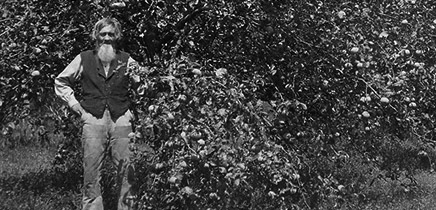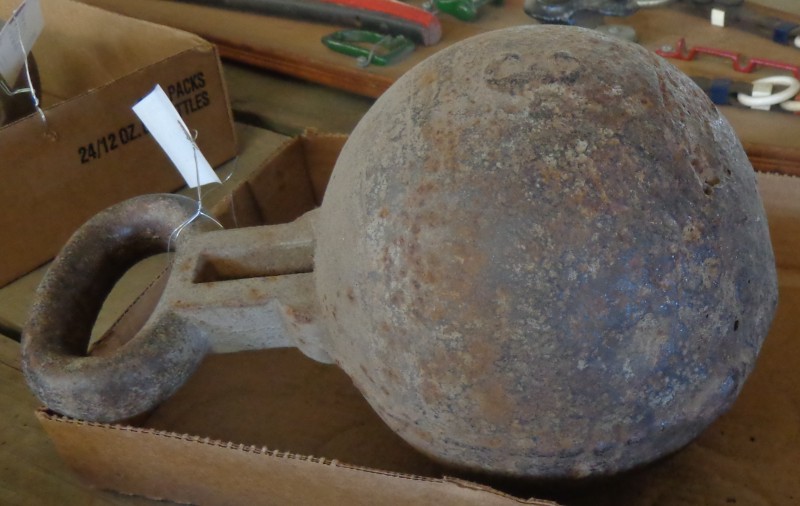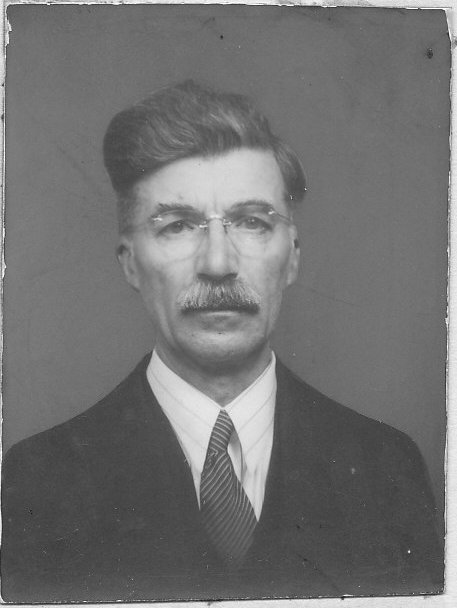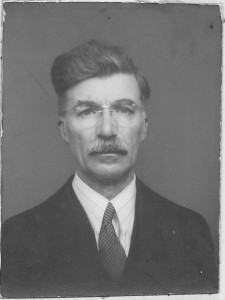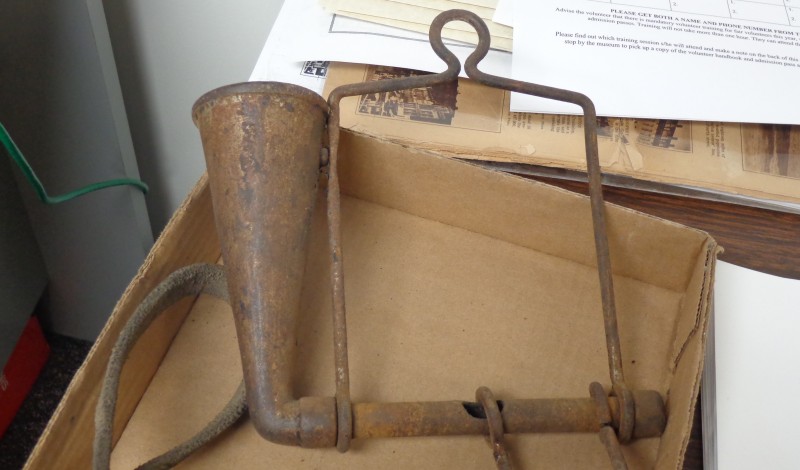O.D. (Otto Diedrich) Sell, 1875-1960
It is common knowledge that Carver County resident O.D. Sell founded the Carver County Historical Society. What is less commonly known is that it was legally organized in April of 1940, making this, 2015, our 75th anniversary. The evolution of the organization has been exponential since its humble origins
Otto Diedrich Sell was born in 1875 to German immigrants, who settled in Laketown Township, just 2 1/2 miles southeast of Waconia. He married Anna Ninneman from Mayer, and entered the mercantile business. It was while he traveled around the county, that he became aware that much of the local history was being lost.
In April of 1940, an organizational meeting was called. A charter for the historical society was drawn up and signed by 32 people. Membership fees were set at 50 cents. The mission was to collect and preserve the history of Carver County and Minnesota, later the Minnesota was dropped. The charter was ratified by the Carver County Board of Commissioners on December 12, 1940.
The CCHS began with one object housed on the second floor of the public school in Mayer. With the collection growing and desiring a central location, the CCHS moved its collection to the Waconia High School in July of 1944. By 1947, the collection again had to be moved due to lack of space. This time it moved into two large rooms on the second floor of the Waconia City Hall.
As the organization grew, so did the desire for a permanent home. A grass roots effort began to build the Society a home which would also house the Veterans Administration. On July 14, 1959, the Carver County Commissioners approved the erection of the “Carver County Memorial Building” with the subtitle of Carver County Historical Society Museum. O.D. Sell did not live to see the building open, as he passed away on March 2, 1960. His son, Elmer oversaw the move to the new building in August of that same year.
An article in the February 10, 1982 ADvocate notes that O.D. greatly enjoyed the years when he was teaching real history to students of all ages as they came to see the many exhibits on display. In some ways some things haven’t changed, except the number of children reached.
Horse Pill Bit
NYA Merger
The cities of Norwood and Young America in Carver County have long shared many similarities in the history of their development, growth and population. Over the years, the councils of each city discussed the possibility of merging to form one town, thus sharing all debt and spending costs. Many resolutions and votes were cast and mergers rejected before anything came out of this plan.
The first attempt at joining the cities of Norwood and Young America occurred back in 1974. In late September of that year, the Norwood City Council passed a merger resolution, followed by the Young America City Council in October. The Minnesota Municipal commission approved the plan on December 5. The resolution was put to vote among citizens on December 14, 1974. Norwood residents chose to pass the resolution with a vote of 172 “yes” to 99 “no”. Young America residents disagreed with that, and said “no” with 317 votes and only 56 ‘yes”.
Early in 1989, the West Carver partnership conducted a survey among Norwood and Young America residents on the issue of the survey. According to this survey, 2 out of every 3 residents supported a merger, with 1 out of 5 disagreeing with the idea. Those who most strongly supported the merger were aged 35-64, with the older residents 65 or older providing the least support. Despite these positive survey results, the issue did get past the vote of the city councils this time around. In September 1989, the city of Young America presented a merger resolution to the Norwood council members. They declined to approve, but said they would remain open to future discussions.
In 1994, the merger issue was broached for a third time. That year, the two cities applied for grant funding to help them combine some of the services. This led to the formation of a steering committee to lead the merger plan and the receipt of state funds towards this goal. After both councils approved the resolution and agreed that a majority vote in each town would decide the issue, it was put to vote among residents on November 7, 1995. This time, the merger passed. Norwood residents voted 295 “yes” and 107 “no”. Young America residents voted 309 “yes” and 200 “no”. The total vote was 604 in favor of and 307 against, an almost 50/50 split at 66%.
With the passing of the merger, the two cities would combine fire departments, police forces, and facilities, along with a combined annual budget. Based on the 1994 budgets, the proposed annual savings from merging would be $54,948. The two cities had just over a “year of cooperation” to solidify the joint budget, facilities, and comprehensive plans (November to January 1997). In June 1996, the new city of Norwood-Young America (NYA) received a Coorperation and Consolidation award from the League of Minnesota Cities for the merger process.
On January 1, 1997, NYA officially celebrated the merger with fireworks, dog sled rides, choral performances, a snow sculpture contest, a memorabilia display, and the swearing in of the new NYA council. One of the biggest concern with the newly merged cities was the issue of the post office, which was stated as reasoning for not approving the merger in the past. In the end, it was decided that people would keep their previous zipcode. The USPS decided the old Norwood post office would be closed, the Young America branch would be used for the Young America Corp., and a new branch would open on Merger Street, in the middle of the newly joined towns. The new branch opened in January 1999.
While the merging of these two cities was controversial, the merger has seemed to be successful over the years. Many residents still claim to live in either Norwood or Young America rather than Norwood Young America or NYA, but that seems to be the only residual issue.
“A Merger? Most Norwood and Young America Residents Say Yes.” Norwood Young America Times, September 7, 1989.
Larson, Tim. “Councils to Plan Retreat to Discuss merger.” Norwood Young America Times, November 16, 1995.
Larson, Tim. “Merger Passes.” Norwood Young America Times, November 9, 1995.
Larson, Tim. “Young America Also Approves Total Vote Majority.” Norwood Young America Times, September 21, 1995.
Lemke, Margaret. “Cities Receive Award for Merger.” Norwood Young America Times, June 27, 1996.
———. “Door is Open for N-YA Merger Talks.” Norwood Young America Times, September 14, 1989.
———. “Norwood Decides Merger Vote to be Counted as One.” Norwood Young America Times, September 14, 1995.
———. “NYA Addresses, Zip Codes Confuse People After Merger.” Norwood Young America Times, January 9, 1997.
———. “NYA Salary Study to be Completed Next Month.” Norwood Young America Times, January 9, 1997.
———. “What Will Merger Bring for NYA?” Norwood Young America Times, January 2, 1997.
“New Post Office Opens in NYA.” Norwood Young America Times, January 14, 1999.
“Norwood and Young America Celebrate Merger of Two Cities.” Carver County News, January 9, 1997.
“Norwood/Young America Councils Approve Merger.” Waconia Patriot, October 10, 1974.
“N/YA Apply for Grant to Help combine Some City Services.” Norwood Young America Times, January 6, 1994.
“NYA Post Offices Outline Changes.” Norwood Young America Times, March 27, 1997.
“Steering Committee Members Appointed for Merger Plan.” Norwood Young America Times, October 27, 1994.
“Young America Defeats Merger with Norwood.” Waconia Patriot, December 19, 1974.
The WPA
America was suffering during the 1930s, and Carver County was no exception. Called a “passing crisis” by President Hoover, it was President Franklin D. Roosevelt and his New Deal that brought hope to millions. Among the many “alphabet agencies” of the New Deal was the Works Progress Administration or WPA.
The WPA was started in April 1935 to replace direct federal relief, or the “dole”. It was similar to an earlier organization, the Civil Works Administration (CWA), but was aimed at small-scale, rather than large-scale, public projects. The goal was to provide work for the unemployed as the jobless rate hit nearly twenty-five percent. Over its eight year existence, the WPA invested nearly $13.4 billion dollars. The program was not discontinued until 1943, when the economy stabilized and workers found jobs in the war and defense industries.
The WPA sought to not only put the jobless to work, but provide training, education, and creative opportunities for its participants. The projects of the WPA focused on construction, remodeling, and design; or community service. Buildings such as post offices, libraries, hospitals, soldiers home, and parks were designed, built, and filled with murals and art by WPA workers. Community service projects included nursery schools, adult and vocational education, libraries (both public and school), sewing projects to provide clothing for those who needed it, and more. This also included the Arts: music and theatre programs to let the public forget their troubles for a while, and writing and arts projects to keep artists working.
A key characteristic of the WPA was that it was operated by state and local, rather than federal, governments. Local agencies were required to provide 10-30% of all project costs. These governments worked closely with nonprofit and community groups that were already active in public and community service. The WPA focused on economic stimulation and giving people a sense of pride and value through meaningful work, rather than a government handout.
In Minnesota alone, thousands benefitted from this program. By September 1935, over 4,000 Minnesotans were put to work. An illustration taken from a report on WPA activities between 1935-1936 highlights some important numbers: 1,266 projects, 65,713 men employed, and $31,735,397.13 spent on wages, materials and supplies. Minnesota’s WPA employment reached its peak in 1938, with 68,000 employed in September of that year. The majority of the projects funding went to the three largest cities: St. Paul, Minneapolis, and Duluth. In rural Minnesota, there were 58,177 eligible for the WPA program in 1935. In Carver County, this meant 181 cases eligible, with 291 individuals.
In November 1935, the State WPA office approved $14,260 in WPA projects within Carver County. This funding mostly covered county-wide roadwork: grading, ditching, gravel surfacing, installing drainage structures, and installing guard rails on certain State and County Aid highways. By 1936, 139 workers were employed on eight county projects. In the years that followed, many projects throughout the county were completed, providing much needed work rather than monetary handouts. Projects included: work on the county fairgrounds; sidewalk, curb, and gutter work; water main and sewage projects; landscaping and remodeling of Waconia Highschool grounds; a mural in the Waconia school; marriage license indexing; work at the experimental farm; work on creeks and channel improvements; and more.
In the twenty-first century, locating records on what WPA projects were completed, beyond those in the newspapers, can be tricky. The work done on the Carver County Fairgrounds was commemorated with a plaque at the front entrance. Others projects were documented in articles and photographs. Projects like sewage systems and drain pipes, were not commemorated. What we do know is that the WPA was very active in Carver County, providing projects, money, and jobs for many local citizens struggling to make ends meet.
“139 WPA Workers are Engaged on 8 Carver County Projects.” Waconia Patriot, April 9, 1936.
“$14,260 in WPA Projects for County Ok’d.” Waconia Patriot, November 21, 1935.
“$7,800 Sidewalk Project at Chaska Under WPA.” Waconia Patriot, May 19, 1938.
“City WPA Plan Given Approval on Its Creek Channel Improvement Project.” Weekly Valley Herald, September 11, 1941.
Federal Writer’s Project of the Works Progress Administration, compiler. The WPA Guide to Minnesota: The Federal Writer’s Project Guide to 1930s Minnesota. Reprint. St. Paul: Minnesota Historical Society Press, 1985.
“Five Active WPA Projects in County to Cost $23, 250.” Waconia Patriot, March 5, 1936.
Nathanson, Iric. “The WPA in Minnesota: Economic Stimulus During the Great Depression.” Minnpost.com, January 7, 2009. Accessed June 18, 2014. http://www.minnpost.com/politics-policy/2009/01/wpa-minnesota-economic-stimulus- during-great-depression
“Rural Minnesota to Have 58,177 Eligible for WPA Program.” Waconia Patriot, July 11, 1935.
“Sewer finished on Tuesday, 4800 Feet of 8 Inch Sewer Pipe Laid by WPA Workmen.” Weekly Valley Herald, July 2, 1942.
Treacy, Mary. Poking Around with Mary Blog, The. “WPA’s Legacy Shapes the Landscape of Minnesota and of Northeast Minneapolis.” July 16, 2012. Accessed June 18, 2014. http://marytreacy.wordpress.com/2012/07/26/wpas-legacy-shapes-the-landscape-of-minnesota-and-of-northeast-minneapolis/
“Work is Begun on WPA Project- Marriage License Index.” Weekly Valley Herald, April 15, 1937.
“WPA Installing 1100 ft. 4 in. Water Main at Chaska.” Waconia Patriot, January 6, 1938.
“WPA Landscaping, Remodeling Waconia High School Grounds.” Waconia Patriot, August 12, 1937.
“WPA Projects- Payroll for County Projects.” Carver County News, December 19, 1935.
“WPA Projects Being Started- Council Votes Sidewalk and River Bank Cleaning Plans at Monthly Meeting.” Weekly Valley Herald, March 10, 1938.
“WPA Project Started at Experimental Farm.” Weekly Valley Herald, July 21, 1938.
“WPA Sewer, Street Project Approved.” Weekly Valley Herald, November 13, 1941.
The Yellowstone Trail
The Yellowstone Trail began through frustration. At a time when horse and wagons were being phased out, and more and more cars were on the road, there was not yet government control of roads. Roads that those on horseback or wagon could travel with ease, stopped cars with ruts, mires, and potholes. Very few of these roads connected to others. They might connect Point A to Point B, but that was all. By 1912, there were 356,000 cars on the road, by 1915 sales neared a million.
The Yellowstone Trail’s claim to fame is not being the first road in many places, but being the first “good” road, the first road designed for travel by car from east coast to west coast. Hence, the motto of the road: “a good road from Plymouth Rock to Puget Sound”. Inspired by old walking/trade trails like the Santa Fe Trail, and tired of his car getting stuck in the mud between Ipswich and Aberdeen, South Dakota, Joe Parmley was inspired to create ‘good’ roads that connected to one another. A local homesteader, newspaperman, Superintendent, and State and County Officer, he at first thought it should be the responsibility of the state and federal governments. At the time, there was no tax or legislation for road building or road maintenance, and no transportation departments. The only road funding at this time (1912, 1916, and 1921) was for the creation of post roads for Rural Free Delivery. Parmley was laughed out of the South Dakota legislature for suggesting such a thing.
Frustrated by the lack of an auto-friendly infrastructure, Parmley decided to start a grass-roots movement, teaming with local county/township governments or organizations to meet his goal. The goal was to choose the best roads within the township or county, connect those to the most promising or well-kept roads in the next county, and eventually create one road with one name covering a large distance.
To promote and advocate for this idea, Joe Parmley teamed with others of a like mind to create the Twin Cities-Aberdeen-Yellowstone Park Trail Association on October 9, 1912. This organization collected dues to pay for advertising and promotion, and maps of the trail. Member counties paid $50, individuals paid $1, and cities or auto club groups paid based on their number of residents or members. The cities, townships or counties, and not the Association, paid for the roads within the trail. In 1915, at the annual meeting, the group’s name was shortened to the Yellowstone Trail Association, and the motto “a good road from Plymouth Rock to Puget Sound” was adopted after being popularized in the press. As the Trail expanded, it was marked by stones painted yellow, yellow signposts, or yellow arrows.
As the Trail passed through Minnesota, it left its mark in Carver County. On May 2, 1916, County Commissioners agreed to pay $4,000 for improvements along the Trail, to be assessed to each city based on how much of the Trail they had. The breakdown follows: Chanhassen, 3 ½ miles; Laketown, 7 miles; Waconia, 7 miles; Benton, ½ mile; and Young America, 7 miles. Financially, Victoria gave $250, Young America gave $750, Norwood gave $1,000 and Waconia gave $1,500. In the twenty-first century, the Trail in Waconia is Highways 5 and 212. Ruts from the Trail are still visible- park at the Waconia Event Center and walk east, looking along the south side of Highway 5, you may see the ruts or yellow signs denoting where the trail once passed.
As the Trail expanded, promotional stunts occurred to boost interest and acclaim. The first occurred on June 15, 1915, after the trail connected Chicago to Seattle. A relay of twenty-one cars was put together to carry a message from Chicago’s Mayor Thompson to Seattle’s Mayor Gill. Cars would go in shifts, like a relay race. The goal was to complete the 2,445 miles in 100 hours. The relay finished early at 97 hours. In 1916, when the Trail reached the East Coast at Plymouth Rock, a new relay was organized, pairing the Army with civilian drivers. Sixty-four cars (with 126 back-up or emergency cars) carried an Army message over 3,673 miles in 121 hours. As there relays passed through towns, residents were warned to use caution around the cars traveling at high speeds.
The Yellowstone Trail reached its peak years in the 1920s, with advances in road funding and tourist bureaus along the route encouraging its use by tourists. The Trail was touted as the “great Northwest route”, “the best route to the playground of the three national parks (Yellowstone, Glacier, and Mt. Rainier)”, and the “scenic route with no deserts”. This was the beginning of the end. The government adopted legislation on November 11, 1926 to begin marking highways by numbers, breaking the Trail down into smaller roads. In the twenty-first century, there is a resurgence of interest in the Yellowstone Trail, with historical markers across the country, books, and tourist maps now highlighting this historic trail.
For more information, visit www.yellowstonetrail.org
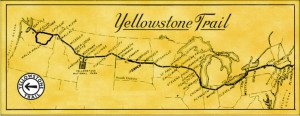
“Highway Enthusiasts Confer with Commissioner.” Waconia Patriot, May 5, 1916.
“May Lose Yellowstone Trail.” Weekly Valley Herald, August 1, 1929.
“May Organize Yellow Trail Auto Club.” Waconia Patriot, May 12, 1916.
Northwest History Course. “Yellowstone Trail”. Accessed June 17, 2014. http://www.nwhistorycourse.org/ttcourse/Year2/unit3/week11/yellowstone.html
“Notice to Contractors.” Waconia Patriot, May 30, 1918.
Petersen Biorn, Wendy. “Yellowstone Trail: Remembering the Good Road”. Chaska Herald, September 2, 2012.
Ridge, Alice A. and John William. Introducing the Yellowstone Trail: A Good Road from Plymouth Rock to Puget Sound, 1912-1930. Altoona, WI: Yellowstone Trail Publishers, 2000.
Ridge, Alice A. and John William. On the Yellowstone Trail: A Reproduction of the First Year Book of the Twin Cities-Aberdeen-Yellowstone Park Trail Association (The Yellowstone Trail Association), 1914. Altoona, WI: Yellowstone Trail Publishers, 2003.
“Surveying Yellowstone Trail Route.” Waconia Patriot, May 3, 1917.
The Yellowstone Trail. “Yellowstone Trail Information”. Accessed June 17, 2014. http://www.yellowstonetrail.org/id2.htm
“The Yellowstone Trail Association of Minnesota- Road Enthusiasts Want Yellow Trail to Receive Attention.” Waconia Patriot, August 31, 1916.
“U.S. Intends to Boulevard Yellowstone Trail.” Waconia Patriot, March 8, 1917.
“Waconia Boosted in Trail Magazine.” Waconia Patriot, May 5, 1916.
“Yellowstone Before 212.” Chanhassen Villager, July 10, 2008.
“Yellowstone Trail Garage.” Waconia Patriot, March 11, 1920.
“Yellowstone Trail has Been Designated as One of $ Military Highways.” Waconia Patriot, July 19, 1917.
Crown College
Crown College is a Christian bible college about twenty-five miles west of the Twin Cities. Their mission is to provide a biblically based education for Christian leadership in The Christian and Missionary Alliance, the church-at-large and the world. It is one of only four colleges in the United States affiliated with The Christian and Missionary Alliance denomination.
Bible institutes and colleges initially began with the renewed spirituality of the “evangelical” movement within protestant churches. The goal of these institutes was not traditional, but spiritual education. It provided scriptural education and religious principles to students of both sexes. The goal was students with the skills, values and lessons needed to serve their church or become a missionary to share their vision. Not true preachers from seminaries, they were none the less devoted to their work. From 1948-1969, this movement expanded to allow bible institutes to be degree-granting and accredited through the American Association of Bible Colleges. The schools were no longer just about missionaries, but about Christian service in everyday life.
Crown College of Minnesota is unique in being the only bible college in Minnesota. While there are other Christian school, like St. Thomas’ or St. Kate’s, this school is the only “bible” college. This means focus on specifically training lay people for Christian service.
Crown College was founded in 1916 by Reverend J.D. Williams with only four students as the St. Paul Bible Institute. By 1924, 152 students attended the school. In the 1950’s, the name was changed to St. Paul Bible College. The College remained in its St. Paul location for more than fifty years, until continued growth forced a move. It relocated to its current campus in St. Bonifacius in June 1970. The main building, built in 1960 as a Jesuit college, was cross-shaped, a perfect fit for the Bible College. As the school grew, the main building expanded and new buildings were added. In 1992, the College changed its name to Crown College and began offering an Adult and Graduate Studies program. In the early twenty-first century, this program is known as the Crown College School of Online Studies & Graduate School. It represents nearly half of Crown’s 1,300 enrolled students. The college offers more than forty accredited degree programs overall, including music, nursing, education and business.
Crown has had students attend from nearly thirty countries. More than fifty percent of graduating seniors have traveled abroad for community service work through InterCultural Experiences (ICE). All undergrad students graduate with a dual degree- Christian Studies plus their chosen field. Nearly seventy percent of all faculty have PhDs’.
Crown College has more than 8,000 alumni (graduates or former students) across the United States and in nearly every time zone around the world. Among its notable alumni are Phil Vischer and Mike Nawrocki. Both attended Crown College when it was the St. Paul Bible College and went on to create the popular Christian children’s television series Veggie Tales.
In 2011, U.S. News and World Report included Crown College on its list of the Best Midwest Regional Colleges. It was also listed among the Top 10 of Christian online colleges and universities by TheBestColleges.org that same year. Crown is affiliated with 13,609 churches and church groups in eighty-one countries and territories through the Christian and Missionary Alliance.
Turning Point: Years of strong growth caused St. Paul Bible College, renamed Crown College, to move to St. Bonifacius in 1970, where it continued to expand.
Chronology:
- 1916: St. Paul Bible Institute founded by Reverend J.D. Williams
- 1924: 152 students attended the school
- 1950s: St. Paul Bible Institute becomes St. Paul Bible College
- 1960: Jesuit Seminary built in St. Bonifacius, Minnesota
- June 1970: St. Paul Bible College relocates to campus in St. Bonifacius, Minnesota
- 1992: St. Paul Bible College becomes Crown College and begins its Adult and Graduate Studies program
- 2011: Crown is rated among the Best of the Midwest Regional Colleges by U.S. News and World Report and ranked in the Top 10 of Online Christian Colleges and Universities by TheBestColleges.org
Bibliography:
Crown College student information catalogue. Crown College, 2012.
Crown College blog. “About”.
http://crownsblog.wordpress.com/about/
Crown College blog. “Moment’s in Crown’s History”.
http://crownsblog.wordpress.com/category/crowns-history/
103.5.4.
Purchase of St. Bonifacius campus, 1970.
Crown College Archive
Description: “Jesuit Campus sold to St. Paul Bible College.” Press release. Public Affairs Office, St. Paul Bible College.
“The Story of Crown College.” Crown College Archives, General History, Folder 100.
Related Resources:
[Primary]
[Secondary]
Brereton, Virginia. Training God’s Army: The American Bible School, 1880-1940. Bloomington: Indiana University Press, 1990.
[Web]
Crown College website.
www.crown.edu
Images/Audio/Video
Photograph Collection, Crown College, St. Bonifacius
Photographic print; “Crown College”
Description: Aerial shot of Crown College campus.
Rights held by Crown College.
Photograph Collection, Crown College, St. Bonifacius
Photographic print; “St. Paul Bible College”
Description: view of campus sign when still in St. Paul as the St. Paul Bible College. Rights held by Crown College.
Press, Crown College, St. Bonifacius
Logo, “Crown College”
Description: logo of Crown College.
Rights held by Crown College.
“This article used with the permission of MNopedia, operated by the Minnesota Historical Society, under a Creative Commons License. No changes have been made to the article’s content.”
Carver Historic District
The city of Carver has a long and rich history as one of the first communities in Carver County. Located on the Minnesota River, it was often the first place immigrants to Carver County visited. From there, they spread out to other towns and farms.
Norwegian immigrant Axel Jorgenson first lived at Carver in the winter of 1851-1852. In 1854, Jorgenson sold his land to a group of town site investors from St. Paul, called the Carver Land Company. Minnesota Territorial Governor Alexander Ramsey was part of this group. He suggested the name “Carver” for the town site after Jonathan Carver, who first explored the area.
By 1855, the town of Carver was already growing. It had a tailor, a hotel, a boarding house, a building designer, a carpenter, a livery stable, a blacksmith, two shoemakers, and a general store. By 1857, thirty-five buildings existed in Carver. The area was a main stopping point in trade and immigrant travel along the Minnesota River. In 1877, Carver was incorporated as the Village of Carver. By the 1890s, Carver was one of the biggest settlements in the county.
Carver’s future changed with the loss of river trade during railroad development. When railroads were built, they bypassed Carver, taking businesses with them. The Prohibition era (1920-1933) made this worse, as many saloons and hotels shut down. Carver became a poor town.
Widespread flooding in 1965 swamped parts of historic Carver. Simple lack of money, in previous years and during the flooding, protected historic structures from being torn down. There was no new building and growth. However, more was needed to stop future destruction of the historic town. On June 25, 1969 a non-profit corporation called Carver-on-the-Minnesota, Incorporated was created. Founders were Edith Herman, Anne Neils-Doerr, Mary Lee Dayton, and Helen McNulty. Still active in the twenty-first century, Carver-on-the-Minnesota’s goal is to stop the decline of Carver, a historically important early river town. The group began by raising money to buy buildings in need of repair. This was the start of the Carver Historic District.
Carver-on-the-Minnesota created restoration plans and design guidelines for restorations in Historic Carver. They also serve as a source for historic building research. Their work led to even more buildings being saved. In 1980, the old town of Carver was chosen as one of the first historic districts in Minnesota, thanks in part to the work of this organization. On January 4, 1980, it was placed on the National Register of Historic Places. Historic Carver contains eighty-seven buildings and four other structures of importance. National Register signs mark many district buildings. They vary from private homes and businesses to churches and public buildings. Buildings range in time from 1852-1925. Many of them have been returned to their original look and style.
In February 1989, the city of Carver created a Heritage Preservation Commission. Their goal was to help the City Council, Planning and Zoning Commission, and Parks Department with preservation work. Preservation work continues in the twenty-first century. On October 26, 2005, Carver received Certified Local Government status from the Minnesota State Historic Preservation Office. Local Historic District residents can go to a Carver office for preservation rules and signs instead of the main state office in St. Paul. Carver was named a Preserve America Community by the White House in 2007. It was only the eighth to be named in the state of Minnesota.
Turning Point: The founding of Carver-on-the-Minnesota in 1969 led directly to increased preservation and restoration efforts in Historic Carver, and its eventual inclusion on the National Register of Historic Places.
Chronology:
- Winter 1851-1852: The Carver area is first settled by Norwegian immigrant Axel Jorgenson.
- 1854: Axel Jorgenson sells his land to the St. Paul based Carver Land Company.
- 1857: Thirty-five buildings already exist in the growing town of Carver.
- 1877: The town is incorporated as the Village of Carver.
- 1920-1933: The Prohibition era causes loss of money in Carver with the closing of money hotels and saloons affected by banning of alcohol.
- 1965: Major flooding of the Minnesota River destroys parts of old Carver.
- June 25, 1969: Carver-on-the-Minnesota, Inc. is founded.
- February 1989: The City of Carver creates a Heritage Preservation Commission to help city departments with preservation plans.
- January 4, 1980: Historic Carver is one of the first districts placed on the National Register of Historic Places.
- October 26, 2005: Carver receives Certified Local Government status from Minnesota State Historic Preservation office.
- 2007: Carver is named a Preserve America Community by the White House.
- 2009: Carver co-hosts the Minnesota Statewide Historic Preservation Conference.
Bibliography:
“Carver Historic District: Dakota Uprising Sesquicentennial Update, 1862-2012”. Walking tour guide to Historic Carver. Carver History. City of Carver. Accessed January 22, 2013. http://www.cityofcarver.com/carver-history/
Carver Historic District, National Register of Historic Places Nomination File (#80001960), State Historic Preservation Office, Minnesota Historical Society, St. Paul.
Minnesota National Register properties, Carver County- Carver Historic District. Minnesota National Register of Historic Places, State Historic Preservation Office. Accessed January 22, 2013. http://nrhp.mnhs.org/NRDetails.cfm?NPSNum=80001960
Carver County, Historic Districts.National Register of Historic Places. Accessed February 8, 2013. http://www.nationalregisterofhistoricplaces.com/mn/carver/districts.html
Preserve America Community: Carver, MN.Preserve America. Accessed February 8, 2013. http://www.preserveamerica.gov/11-23-07PAcommunity-carverMN.html
Von Walter, John. Email of Carver-on-the-Minnesota details to author, January 10, 2013.
Related Resources:
[Primary]
“An Evening of Carver History Planned Dec. 15”. Carver County Herald, December 7, 1977.
“Carver Revives Historical Preservation Committee”. Carver County Herald, June 23, 1988.
“Carver on the Minnesota Returns”. Chaska Herald, October 14, 2010.
“Dead End for ‘Suitcase Murder’ Investigation?” Chanhassen Villager, June 21, 2007.
“Flood Threat Looms as River Goes on Rampage”. Weekly Valley Herald, April 8, 1965.
“Historical Sketches of Townships and Villages: Part Twenty-One”. Waconia Patriot, April 8, 1976.
“Recognition on National register of Historic Places Possible for Several County Sites”. Waconia Patriot, January 19, 1978.
“Record Flood Hits Chaska-Carver”. Weekly Valley Herald, April 15, 1965.
[Secondary]
Hartley, Lucie K. The Carver Story. 2nd ed. Carver, MN: 1993. (self-published)
Holcombe, Maj. R.I., ed. Compendium of History and Biography of Carver and Hennepin Counties, Minnesota. Chicago: Henry Taylor and Company, 1915.
Lofstrom, Ted and Lynne VanBrocklin Spaeth. Carver County: A Guide to Its Historic and Prehistoric Places. St. Paul: Minnesota Historical Society Press, 1978.
Tremblay, Ruth and Lois Schulstad. Images of America: Carver County. Charleston, SC: Arcadia Publishing, 2011.
[Website]
City of Carver Historic District walking tour. Carver County Historical Society. Accessed January 10, 2013. http://carvercountyhistoricalsociety.org/about_us/historypages/Historic%20District%202012%20Update.pdf
Our Communities: A Walk Back Through Time- Carver.Carver County Historical Society. Accessed January 10, 2013. http://carvercountyhistoricalsociety.org/150th/150th_local_gtky_carver.html
Images/Audio/Video
Photograph Collection, John Von Walter
Digital image; “1856 Gables”
Description: 201 Fourth Street East, Carver, Minnesota
Rights held by John Von Walter.
Photograph Collection, John Von Walter
Digital image; “1925 Mobile Gas Station”
Description: 200 Broadway, Carver, Minnesota
Rights held by John Von Walter.
Photograph Collection, John Von Walter
Digital image; “Hebeisen Hardware ca. 1870”
Description: 109 Third Street East, Carver, Minnesota
Rights held by John Von Walter.
Photograph Collection, John Von Walter
Digital image; “Springside, Greek Revival-Federal ca. 1860”
Description: 113 Fourth Street West, Carver, Minnesota
Rights held by John Von Walter.
Photograph Collection, John Von Walter
Digital image; “Hotel Luksenborg 1852”
Description: 309 Oak Street, Carver, Minnesota
Rights held by John Von Walter.
“This article used with the permission of MNopedia, operated by the Minnesota Historical Society, under a Creative Commons License. No changes have been made to the article’s content.”
Wendelin Grimm, 1818-1890
Wendelin Grimm was born October 18, 1818 in Kulsheim, Baden, Germany, to Valentine and Marie (Adelmann) Grimm. He grew up in a farm rich area of southern Germany, learning important crops and farming practices. In 1845, Grimm married Julianna Segner (born June 15, 1821) of Steinback, Baden, Germany. The Grimms chances to own a farm were limited by the land inheritance practices of the time. Farming and crop prices were under pressure, and their future in Germany looked grim. With a growing family to support, sons Frank and Joseph and daughter Ottilia, Wendelin and Julianna looked to America for their family’s future.
After landing in New York, the Grimm family chose to continue westward in search of good farmland. They reached the Chaska on September 1, 1857. In 1859, a fourth child, Caroline was born. The same year, Grimm purchased 160 acres of land in Laketown Township (near Victoria) from John Neunsinger.
In 1872, Grimm purchased a second farm between Victoria and Chaska. When his oldest son Frank married Rosalia (Rosella) Pograbo, they took over the original farm, while the rest of the Grimms moved to the new one. On June 1, 1875, Joseph married Mary Agnes Browers, and moved to Texas, back to Chaska, then to Tampa, Florida. Ottilia married Hubert Kelzer in 1889, and lived with her parents on the new farm, which has been passed down through the Kelzer family. Youngest daughter Caroline and husband William Glatzel settled a mile north of Chaska. Wendelin Grimm died December 8, 1890, followed by Julianna on October 28, 1897. Both are buried in the St. Victoria Cemetery, in Victoria, MN.
Wendelin Grimm’ farming brought him fame. When the Grimms came to America, they packed a fifteen-pound bag of “Lucern” or “Ewiger Klee” (everlasting clover). Grimm began planting this feed crop over the winter months, saving the seeds that survived the cold temperatures, and replanting them the following year. Over the next fifteen years, more seeds survived, though the winter of 1874-1875 was so harsh it nearly caused his whole crop to die out. Grimm alfalfa became winter hardy, grown year round to keep cattle and dairy cows well fed.
At first, Grimm only sold this crop to his neighbors, as they noticed how well fed his cows were. Elsewhere in Minnesota, farmers let animals graze on vacant land or open range. The Enclosure Act of 1871 changed this. Fences were built, and feed crops needed. By 1889, Carver County was producing nearly fifty percent of all alfalfa in the state. In the 1890s, the growth of the dairy industry in the “Golden Buckle of the Dairy Belt” led to even more alfalfa being grown. Farmers wanted the hardier Grimm alfalfa for its high yields, high protein content, ability to return nutrients to the soil, ability to crowd out weeds, and hardiness in cold climates.
Over time, local farmers like A.B. Lyman, researchers like Charles Brand, and University of Minnesota Agricultural Extension Station head Professor Willet Hays (later U.S. Assistant Secretary of Agriculture) brought national attention to Grimm alfalfa. Tests comparing it to other strains proved its better quality. A.B. Lyman grew so much of it, his farm became known as “Alfalfadale”. In 1916, the Grimm Alfalfa Growers Association began in North Dakota. By the 1930s, Grimm Alfalfa was the preferred variety in the United States. In the twenty-first century, Grimm Alfalfa is the source of all modern varieties of alfalfa grown on more than twenty-five million acres of farmland in the United States. It is valued at ten billion dollars annually.
In 1924, the Grimm Alfalfa Growers’ Association honored Wendelin Grimm’s achievement with a plaque on his original farm. In the 1950s, the farm became part of a conservation land reserve. In 1963, this land became the Carver Park Reserve. In 1974, the Grimm house and farm were designated on the National Register of Historic Places. In the twenty-first century, there are tours, living history, and agricultural practice demonstrations on the site.
Turning Point: In 1859, Wendelin Grimm begins planting alfalfa fields, creating a winter hardy strain and becoming a pioneer in American agricultural history.
Chronology:
- October 18, 1818: Wendelin Grimm born to Valentine and Marie (Adelmann) Grimm in Kulsheim, Baden, Germany
- June 15, 1821: Julianna Segner born in Steinback, Baden, Germany
- 1845: Wendelin and Julianna (Segner) Grimm marry
- 1857: Grimm family immigrates to America, arriving in Chaska in September
- 1859: Their fourth child Caroline is born
- 1859: The Grimms purchase 160 acres of farmland in Laketown Township from John Neunsinger
- 1859: Grimm begins fifteen years of planting alfalfa seeds
- 1871: Enclosure Act put into effect
- 1872: A second farm is purchased between Victoria and Chaska
- 1874?: Frank marries Rosalia Pograbo and they take over the original farmstead
- June 1, 1875: Joseph marries Mary Agnes Browers, and moves to Texas, back to Chaska, then to Tampa, Florida.
- 1874-1875: Harsh winter nearly causes Grimm Alfalfa to go extinct
- 1876: Chaska brick Grimm farmhouse is built
- 1889: Ottilia Grimm marries Hubert Kelzer and they live with her parents on the second farmstead
- 1889: Carver County is producing nearly fifty percent of all alfalfa in the state of Minnesota
- December 8, 1890: Wendelin Grimm dies
- October 28, 1897: Julianna Grimm dies
- 1890 to 1900: Farmers in Carver County turn more to the dairy industry and supporting feed crops like Grimm alfalfa, becoming the “Golden Buckle of the Dairy Belt”.
- 1903: Grimm Alfalfa is officially acknowledged by the U.S. Department of Agriculture
- 1916: Grimm Alfalfa Growers Association is formed in North Dakota
- 1924: A plaque honoring Wendelin Grimm’s achievements is dedicated on the original farmstead
- 1930’s: Grimm Alfalfa is the preferred variety in the United States
- 1963: The original farmstead becomes part of Carver Park Reserve
- 1974: The original farmstead placed on the National Register of Historic Places
- 2008: Grimm Alfalfa is recognized by the Minnesota Historical Society as one of the 150 most influential things in Minnesota History.
- 2012: Grimm Alfalfa is the source of all modern varieties of alfalfa grown on more than twenty-five million acres in the United States and valued at ten billion dollars annually.
BIBLIOGRAPHY
Diethelm, John A. Compiled by Vince Winninghoff. The Victoria Story. Victoria, MN: 1957.
Edwards, Everett E. and Horace H. Russell. “Wendelin Grimm and Alfalfa”. Minnesota History Quarterly, March 1938, Vol. 19 Issue 1: 21-33. http://collections.mnhs.org/mnhistorymagazine/articles/19/v19i01p021- 033.pdf
Edwins, Steven, Principal Investigator. “The Wendelin and Julianna Grimm Farmstead: a Reuse Study”.
Project manual, joint project of the Minnesota Historical Society and Surburban Hennepin Park District, Carver Park Reserve, August 1994.
Kelzer, Frank. “The History of Grimm Alfalfa”. Chaska, MN: September 1, 1957.
RELATED RESOURCES
Secondary:
Balmer, Frank E. “The Farmer and Minnesota History”. Minnesota History Magazine, September 1936, Vol. 7 Issue 3: 199-217. http://collections.mnhs.org/MNHistoryMagazine/articles/7/v07i03p199-217.pdf
Brand, Charles J. “Ancestral Home of Grimm Alfalfa”. Fertiizer Review, September-October 1954, Vol. 9 Issue 4: 8-10.
Edwins, Steven, AIA. “The Wendelin Grimm Farm House Stabilization”. Project manual, Carver Park Reserve, 1994.
Holcombe, Maj. R.I., editor. Compendium of History and Biography of Carver and Hennepin Counties, Minnesota. Henry Taylor and Company: Chicago, 1915.
Lofstrom, Ted and Lynne VanBrocklin Spaeth. Carver County: A Guide to Its Historic and Prehistoric Places. St. Paul: Minnesota Historical Society Press, 1978.
“The Annual Meeting”. Minnesota History Magazine, March 1938, Vol. 19 Issue 1: 63-70. http://collections.mnhs.org/MNHistoryMagazine/articles/19/v19i01p063-070.pdf
Tremblay, Ruth and Lois Schulstad. Images of America: Carver County. Arcadia Publishing: Charleston, South Carolina, 2011.
Warner, George E. and Charles M. Foote. History of the Minnesota Valley: Carver County. Minneapolis: North Star Publishing Company, 1882. Republished 1986.
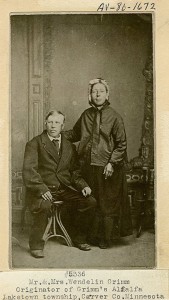
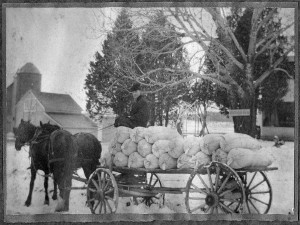
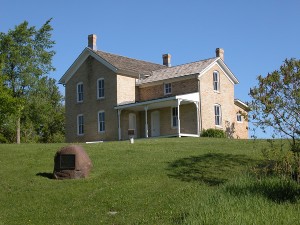
“This article used with the permission of MNopedia, operated by the Minnesota Historical Society, under a Creative Commons License. No changes have been made to the article’s content.”
Susie Schmitt Hanson, 1860-1956
A prime example of entrepreneurial spirit, Susie Schmitt Hanson was a pioneer for Minnesota women in business. As the owner of one of Waconia’s longest-running businesses, she remains a prominent figure in the history of that town.
Susan “Susie” Schmitt was born on August 13, 1860 in the village of Chaska. She was one of eight children of John and Rosina Schmitt. The others were Andrew, Casper, Anna, Caroline, Bernice, and twins Joseph and Josephine.
Schmitt was a talented seamstress from a young age. She turned that gift into a career spanning nearly seven decades, working on quilts, dresses, hat, hat pins, and more. Susie Schmitt first entered the millinery business in 1888 as an apprentice for four years in the city of St. Paul. Afterward, she returned to Chaska to run a dressmaking business. That business operated for 12 years.
In 1898, Schmitt opened her own dressmaking and millinery shop in Waconia. Four years later, she moved the shop to a prime location on Main Street after purchasing the A. Ed. Kauder property for $2,300. At this new location, the store focused on millinery. Schmitt operated this business for forty-eight years, until she sold it to Mrs. Elva Ellison in 1946. She continued making and remodeling hats in a smaller shop. Schmitt also maintained scrapbooks of newspaper clippings of weddings, obituaries and key events, which are now in the Carver County Historical Society collection along with many of her photographs and examples of her work as a milliner.
In July, 1912, Susie Schmitt married Charles Hanson, a local carpenter born in March 1861. The couple never had children of their own, leaving Schmitt to care for and spoil her nieces and nephews. After Hanson passed away on June 16, 1932. Schmitt outlived him by twenty-three years, until her own death on October 7, 1956 at the age of ninety-six.
Turning Point: In 1888, Susie Hanson enters a millinery apprenticeship in St. Paul, beginning a lifelong career in that industry.
Chronology:
- August 13, 1860: Susan “Susie” Schmitt is born to John and Rosina Schmitt of Chaska.
- March 20, 1861: Charles Hanson is born.
- 1888: Schmitt enters an apprenticeship in millinery and dressmaking in St. Paul where she remains for four years.
- 1892: Schmitt returns to Chaska and opens a dressmaking and millinery business.
- 1898: Susie Schmitt moves to Waconia and opens a dressmaking and millinery shop.
- July 1912: Schmitt marries Charles Hanson in Waconia.
- June 16, 1932: Charles Hanson dies.
- June 1946: Schmitt sells her Waconia business to Mrs. Elva Ellison.
- October 7, 1956: Susie Schmitt Hanson dies at age ninety-six.
BIBLIOGRAPHY
“Miss Susie Schmitt Married,” Waconia Patriot, July 5, 1912.
“Mrs. Hansen a Milliner 40 Years,” Waconia Patriot, July 12, 1928.
“Mrs. Hansen Sells Millinery Store,” Waconia Patriot, June 13, 1946.
“Purchase Property,” Weekly Valley Herald, January 29, 1903.
“Waconia’s Oldest Citizen Died Sunday,” Waconia Patriot, October 11, 1956.
RELATED RESOURCES
Primary:
“Obituary.” Susie Hanson Scrapbook no. 14.
Susie Schmidt Hanson Scrapbook Collection.
Scrapbook Collection, Carver County Historical Society, Waconia
Description: 19 scrapbooks of newspaper clippings.
Secondary:
Ben-Yusuf, Anna. The Art of Millinery: A Complete Series of Practical Lessons for the Artiste and the Amateur. New York: Millinery Trade Publishing Co., 1909.
Powell, Vee Walker. How to Make Hats and Accessories. Garden City, NY: Garden City Publishing Co., 1946.
Schilling, Trish Carney. Millinery Preservation : Storage, Display, Tools, Steam, Felt, Straw, Fabric, Trims, Repairs-Hat Bodies, Repairs-Wires & Headsize Chart. Minneapolis: Minneapolis Millinery, 1999.
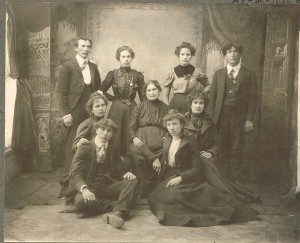
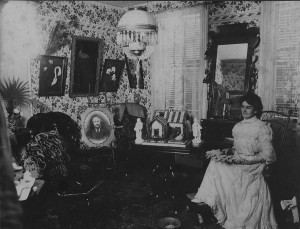
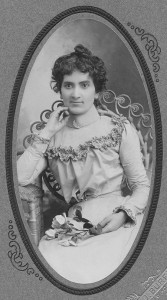
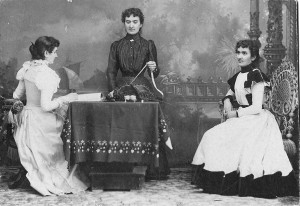
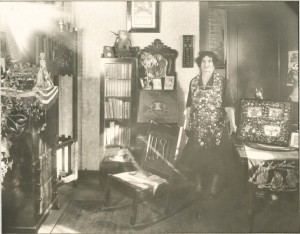
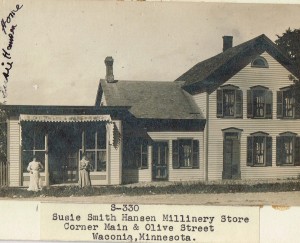
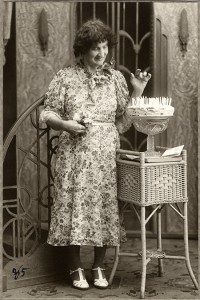
“This article used with the permission of MNopedia, operated by the Minnesota Historical Society, under a Creative Commons License. No changes have been made to the article’s content.”

